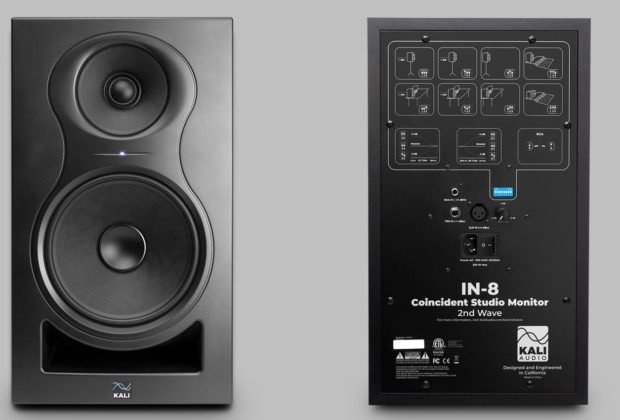The new IN-8 2nd Wave replaces the original IN-8 monitor and features substantial performance improvements. There is a 12-dB lower self-noise, improved DSP for a smoother tuning, lighter transducers, plus the improved construction processes makes for better cosmetic longevity—they don’t scratch as easily!
Like the new Kali Audio IN-5, the IN-8 uses a newly designed coaxial mid-range/tweeter driver that works with the woofer and crossover to help make the whole speaker act as a single, acoustic point source. The elimination of the spatial separation of the high and low frequency elements gives a pair of IN-8 monitors a highly detailed soundstage. The new midrange driver also allows for substantial system-wide improvements in total harmonic distortion.
I’ve been mixing on a pair of original IN-8s and these new, 2nd Gen models sound amazing to me. There is no more (EU Mandated) “sleep mode” and no more constant hissing. The DSP switches on the back panel compensate for your room and the IN-8’s positioning in it. A 140-watt (total) Class-D amp provides 60-watts to the woofer and 40-watts each for the midrange and tweeter drivers. Boundary EQ settings, like those found on Kali Audio’s Lone Pine monitors, are also accessible on the back of the speaker.
Introduced with the IN-5 and also new for the IN-8 2nd Wave Monitor is a boundary EQ for placing the speakers horizontally on console bridges to improve sightlines but not distort stereo imaging. I love my pair IN-8s 2nd Wave monitors and everyone that comes into my studio always remarks about the great sound and the remarkable price point—exactly the same as the previous original IN-8 monitors at $399 U.S. MSRP.














